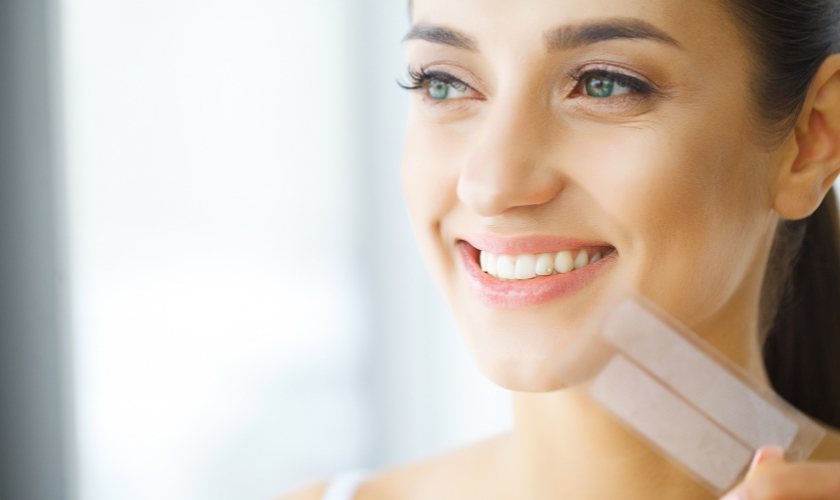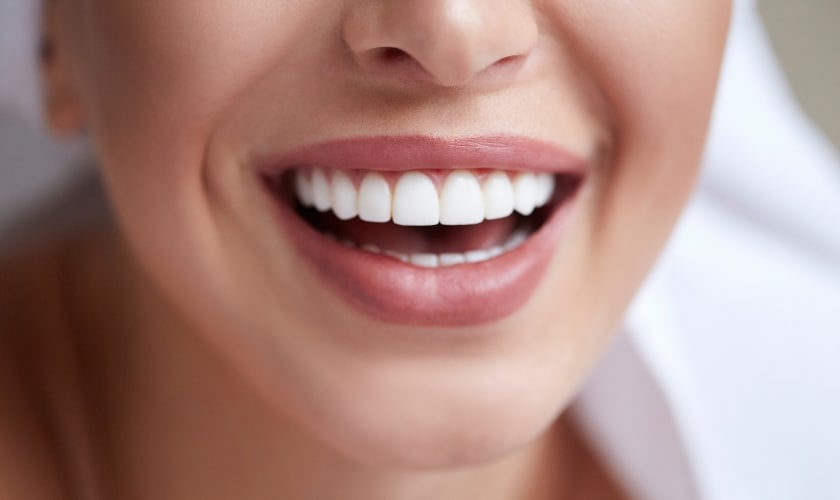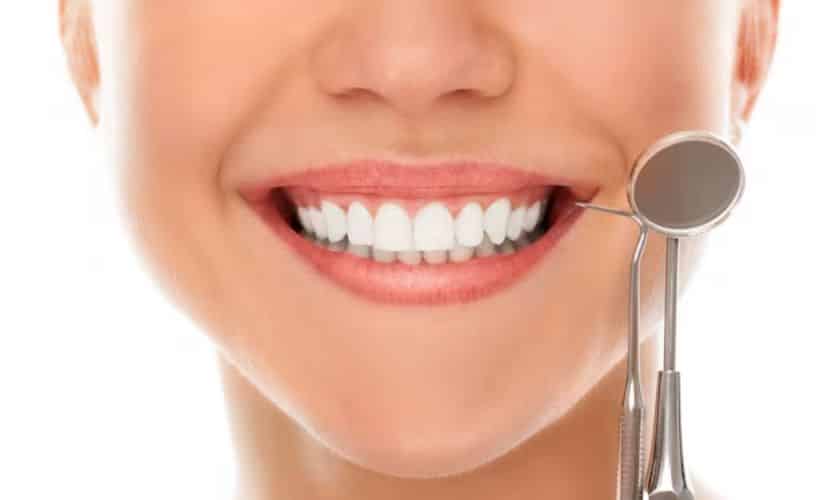
By Gentle Touch Dentistry Richardson
Have you had enough of worrying about your teeth? Do you desire a smile that is more confident and cheery? In that case, you might have thought about utilizing whitening strips. These tiny miracle workers promise to brighten your teeth in just a few applications, but it’s simple to become confused because there is so much contradicting information available. Are they secure? How frequently ought one to utilize them? Most importantly, after utilizing whitening strips, should you brush your teeth? Do not be alarmed! We’ll cover all of these topics and more in this blog post as we delve into the world of whitening strips. So buckle on, and let’s explore this fascinating subject together!
What Are Whitening Strips?
- Adhesive plastic pieces with a gel-based whitening process are called whitening strips. They are made to fit securely over your teeth and function by progressively removing any stains from the enamel’s surface. The majority of whitening strips are used once or twice a day for 30 minutes at a time, and they are available in pairs for both the upper and lower sets of teeth.
- Contrary to other tooth-whitening procedures like in-office bleaching sessions or professional dental cleanings, you can buy whitening strips over-the-counter from pharmacies or internet shops without a doctor’s prescription.
- Since hydrogen peroxide is the main element in most whitening strip formulations, some people may feel sensitivity after using it. If you have sensitive teeth, it’s crucial to carefully read the label as there are milder options that employ carbamide peroxide instead.
- It’s important to keep in mind that although these solutions can be useful in eliminating surface stains from things like coffee, tea, or smoking, they might not be able to eliminate more deeply ingrained discolorations brought on by prescription side effects or heredity. In some situations, you might need to ask your dentist about more extensive treatment alternatives, like veneers or crowns.
How Do Whitening Strips Work?
A common at-home teeth whitening method that has gained popularity in recent years is the use of whitening strips. The active component that whitens teeth is hydrogen peroxide, also known as carbamide peroxide, and is contained in a gel-like solution that is contained in these thin, flexible plastic strips.
- Applying the strip directly to your teeth and leaving it there for a predetermined period—typically 30 to an hour—is the first step in the procedure. The gel penetrates deeply into the pores of the teeth, seeping into the enamel and starting to dissolve surface stains.
- If you apply these strips every day for a few weeks, they will eventually help eliminate stains that are more deeply ingrained in the layers of your teeth. Your teeth appear whiter than previously when they are exposed to hydrogen peroxide on a regular basis because it breaks down the chromogens on their surface.
- It’s crucial to remember that not all discolorations react favorably to whitening strips. They are most successful on yellow-colored stains from tobacco or coffee, but they might not work well on gray-colored stains from heredity or some drugs.
- Without needing to visit the dentist frequently, whitening strips are a simple and affordable solution to brighten your smile.
Are Whitening Strips Safe?
- The safety of whitening strips is one of the most frequent worries individuals have about them. You’re basically applying a chemical solution to your teeth, so it makes sense to be concerned about potential risks.
- The good news is that, when used according to instructions, most individuals believe whitening strips to be safe. Hydrogen peroxide, a safe dental therapy agent for decades, is the active component of many whitening strips.
- Nevertheless, there are a few possible adverse effects to be mindful of. When using whitening strips, some people may get gum irritation or teeth sensitivity. Talk to your dentist and take a break from the therapy if you experience any discomfort while using them.
- When using whitening strips, it’s also crucial to strictly follow the directions. Damage to enamel and other problems with oral health can result from overuse.
- Like any cosmetic product, whitening strips have potential hazards. Still, with careful use, they may be minimized, making them safe for use by the majority of people who want whiter teeth!
How Often Should I Use Whitening Strips?
“How often should I use them?” is one of the most frequent queries individuals have when utilizing whitening strips. A few variables determine the response.
- First and foremost, it’s crucial to follow the directions included with your whitening strips. Recommendations for usage duration and frequency may vary throughout brands.
- The majority of whitening strip kits normally advise applying them once daily for 14 days or until the desired level of whiteness is reached. Using them more than thrice a day is not advised as this might lead to enamel damage and tooth discomfort.
- It’s also important to take into account how frequently you eat and drink things like coffee and red wine that might discolor your teeth. You might need to use the strips more regularly to maintain the results if you smoke or drink coffee on a daily basis.
But, it’s essential to cease using the strips right away and speak with your dentist about your options if you feel any discomfort while using them, such as increased tooth sensitivity or gum inflammation.
Should I Brush My Teeth After Using Whitening Strips?
- It’s normal to ask whether brushing your teeth right away will maximize the effects of utilizing whitening strips. Experts advise delaying brushing your teeth for at least thirty minutes.
- This is due to the hydrogen peroxide found in whitening strips, which has the ability to momentarily weaken tooth enamel and increase its susceptibility to brushing-induced erosion. Additionally, brushing too quickly may cause sensitivity or discomfort by pushing the hydrogen peroxide deeper into the enamel.
- After taking off the strips, properly rinse your mouth with water rather than brushing your teeth right away. This gives your saliva enough time to neutralize and remineralize your tooth enamel, helping to eliminate any remaining gel that may have remained on your teeth.
- It’s crucial to remember that using whitening strips excessively can harm gums and tooth enamel. Follow the manufacturer’s instructions and avoid using them too frequently.
- It’s advisable to wait at least 30 minutes before brushing, even if it could be tempting to do so right away after applying whitening strips to feel like you have fresh breath. Recall that the safe and efficient attainment of a brighter smile depends heavily on appropriate usage and timing!
It’s evident from examining the subject of whether or not to brush your teeth after using whitening strips that there isn’t a universal solution.
Initially, be careful to read and abide by the directions that come with your whitening strip package. Your comprehension of when and how often to utilize them will improve as a result.
Second, it’s critical to consistently brush and floss your teeth in order to maintain appropriate dental hygiene. Brushing your teeth before using the strips can assist in getting rid of any plaque accumulation, and letting your teeth sit for at least half an hour after using them will allow the enamel to remineralize.
See your dentist if using these strips causes you any pain or irritation or if you have any questions regarding their safety.
Using these strips properly and sparingly can be a useful tool for improving the brightness of your smile. You can have a brighter smile without jeopardizing your dental health or safety by heeding these recommendations and taking good care of your oral hygiene in general.






